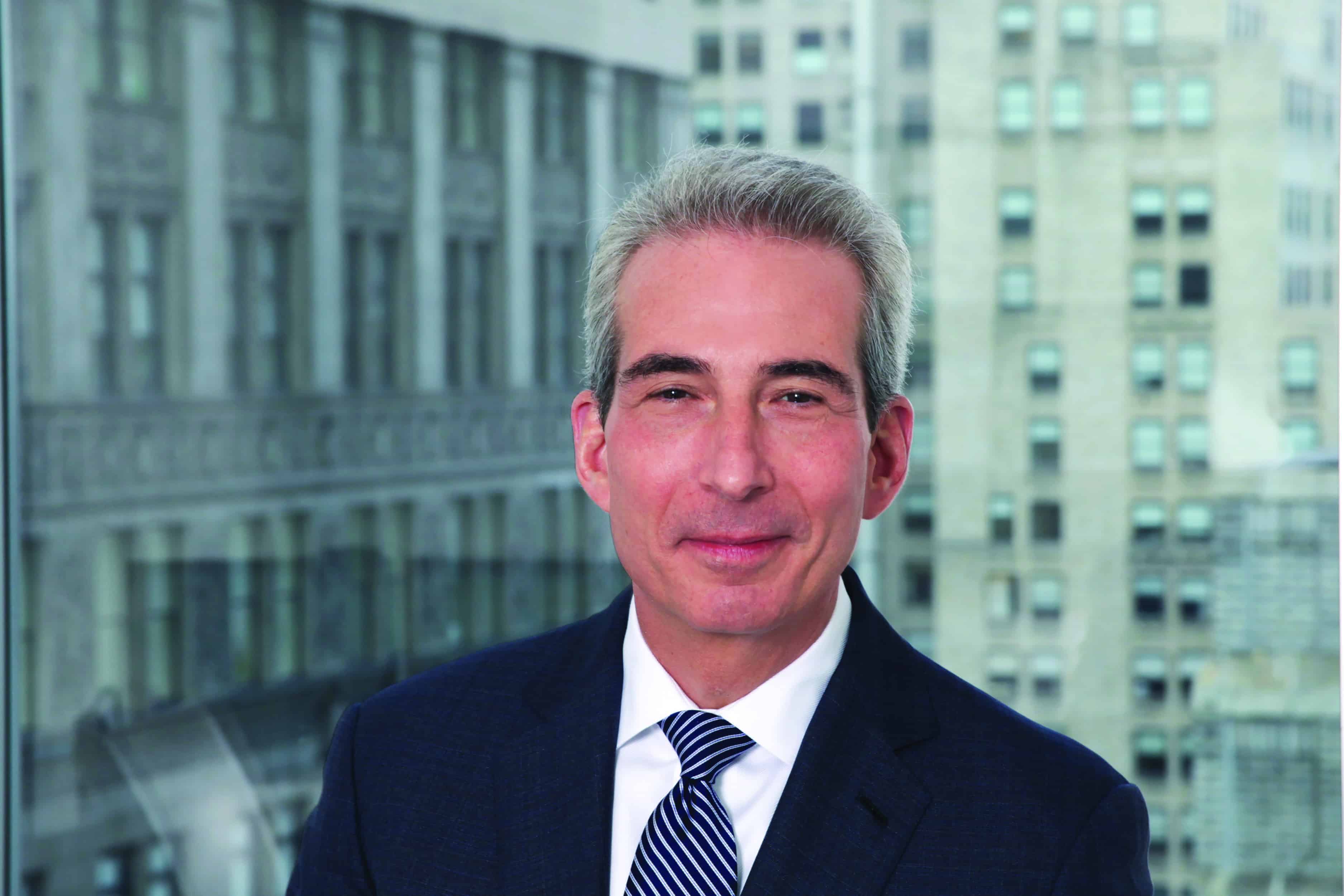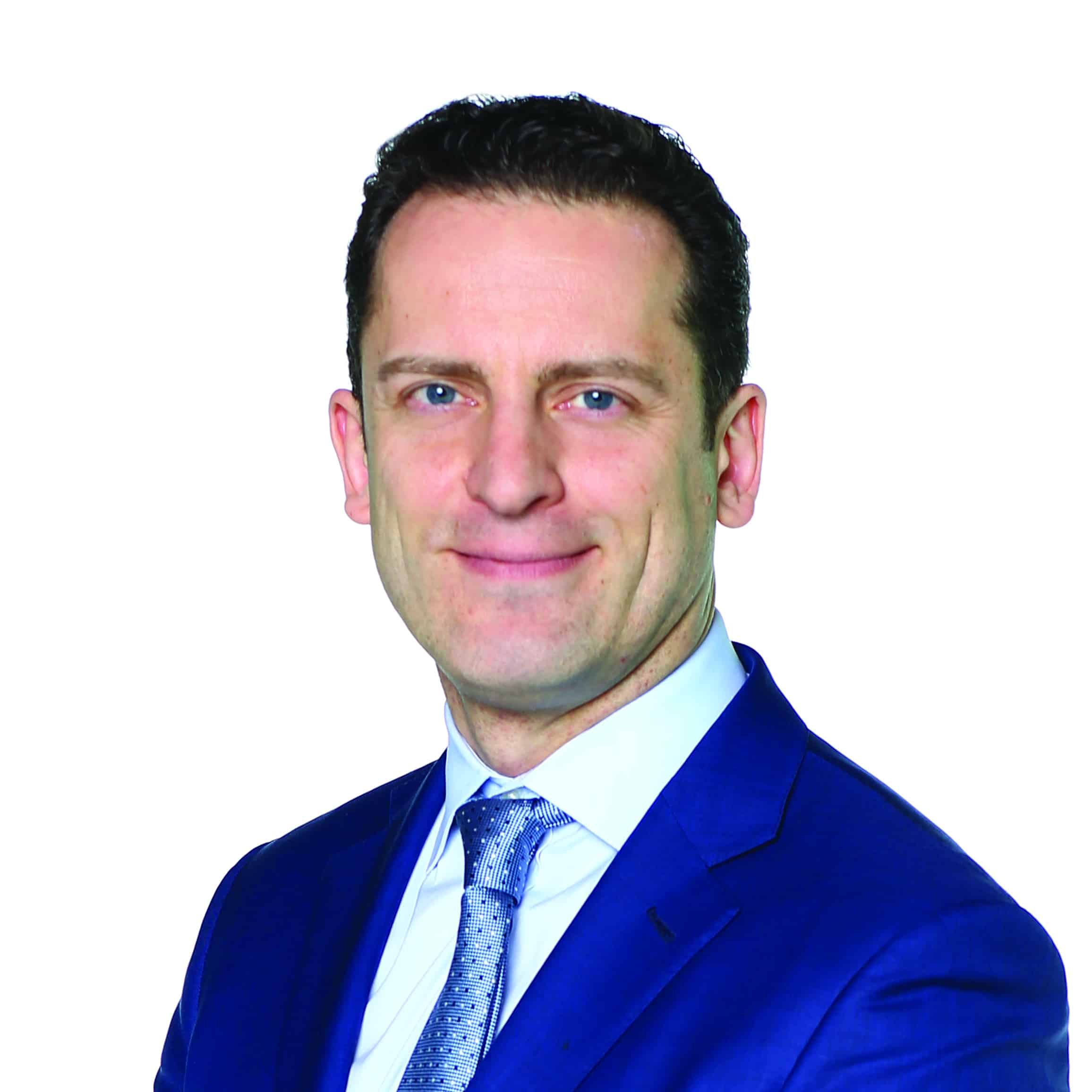The private equity model has held up very well over the decades, continuing to outperform the public markets, even as economic cycles come and go. But the rate of growth has slowed, leading PE firms to seek adjacent areas of business to expand. As PE firms face increased pressure to produce higher returns on their investments, many of them are turning to a familiar area of business: lending.
Middle-market loans offer a potential growth path for PE firms, many of whom view credit as a natural extension of their bread-and-butter operations. Moving into middle-market loans also takes advantage of the expertise firms have developed as investors in nurturing businesses. And, as interest rates continue to fall, demand for loans is expected to rise.
Going where the money is

Returns delivered by the private equity industry are declining, although the asset class still outperforms the public stock markets. Projections put buyout returns at 8.8 percent over the next 10 years, down from the actual return of 10.6 percent over the past decade, according to a recent report published by pension consultant Cliffwater.
Private credit returns are expected to do better, with Cliffwater projecting returns as high as 9.5 percent, which explains why so many private equity firms are flocking to the leveraged loan market.
“Leveraged loans, by and large, are cheap and a very good place to invest capital,” said David Miller, global head of credit at Credit Suisse (NYSE: CS), at a recent conference.
The leveraged lending market has grown to more than $2 trillion in the United States, according to credit rating agency Moody’s (NYSE: MCO). That is up about 80 percent over the past eight years.
“A lot of firms have added credit as part of their expansion. The banks left a big void, and the LP market is eager for yield. Private equity is pretty good at going where the money is,” says Jeffrey Stevenson, a managing partner with VSS, formerly, a private equity investment firm. “While there is fund formation around private debt, not all strategies are the same and, in fact, they are all a little different.”
The move to offer credit products is viewed as a relatively easy one to make for private equity firms. General partners use a lot of the same skillsets to buy a company as they do to suss out solid credit deals. Additionally, many industry professionals argue there is a greater need for more lenders as a result of traditional banks shuttering their lending arms after the financial crisis. From large to small, over the past three years a slew of private equity firms have dipped their toes into the leveraged lending business.
In good company
PE firms including the Blackstone Group (NYSE: BX), KKR, the Carlyle Group (Nasdaq: CG) and Apollo (NYSE: APO) have all grown their credit business substantially over the past couple of years. For example, in 2018, KKR closed on $2.2 billion for its KKR Private Credit Opportunities II fund, more than twice its predecessor fund, KKR Mezzanine Partners I, which was raised in 2015. In 2019, Silver Lake raised $2.5 billion for its first ever credit and structured equity fund.
Many middle market firms have also expanded or launched credit strategies. Firms such as Thoma Bravo, Adams Street, the Sterling Group, the Riverside Co., H.I.G., BC Partners, Silver Lake, Gryphon Investments and Francisco Partners have all launched credit arms.
Traditional middle-market lenders are feeling the competition. Mergers & Acquisitions reached out to several lenders for this story who agreed to speak only on background. The lenders acknowledged that there is more competition for deals these days, but, they said, business remains strong. They also pointed out that, while many PE firms may have their own lending capabilities, they aren’t necessarily lending on their own deals, because that would overexpose them. Here’s a detailed look at the strategies of four PE firms making the move into credit.
Filling the gap left by banks

One of the largest private equity fund-of-funds managers in the world, Adams Street Partners hired Bill Sacher (pictured) and Shahab Rashid in 2016 to build a private credit platform and open a New York office. The firm said there was a good opportunity to generate attractive returns while providing capital to their general partner sponsors, who had seen banks pull back from middle-market lending.
The firm set out to offer everything from first-lien loans and unitranche facilities to second-lien loans, mezzanine debt and preferred equity.
In May 2019, the firm completed fundraising for its inaugural private credit program with approximately $1.1 billion of capital. The firm garnered investment from new and existing investors in the U.S., Europe and Asia.
“Our long-term private equity GP relationships give us an important edge in a competitive market,” says Sacher, partner and head of private credit at Adams Street. The firm sources its deals primarily from its general partners. “The vast majority of our deals come from sponsors in our private equity fund-of-funds portfolio. There are few debt providers that have the connection to private equity firms that we have. It’s one of the reasons a private credit strategy was such a natural fit for the firm.”
In December 2018, before Adams Street had closed its fund, the firm provided a senior-secured term loan and a revolving credit facility to Permira for its acquisition of JayHawk Fine Chemicals, a custom manufacturer of specialty chemicals. Adams Street and Permira had a relationship prior to Adams Street opening a credit facility.
Adams Street Partners provides financing solutions to sponsor-backed middle- market companies across the capital structure. The team, which consists of 10 investment professionals, has deployed close to $700 million of commitments in 27 investments since the launch of the strategy. The majority of the firm’s deals are new leveraged buyouts with about 30 percent coming from M&A-related add-ons and refinancings.
“The private credit market is still in its ascendancy. There is a supply and demand imbalance that was created when the banks exited the market. That void has yet to be filled,” says Sacher. “And even though the private market has become more crowded, the supply-demand imbalance remains largely intact. The total pool of dry powder in private credit funds today is about $100 billion. That is up two- or three-fold from 10 years ago, but there is still about $800 billion in visible forward demand with upcoming mid-market loan maturities and private equity dry powder.”
Super flexible
In the lower middle market where Balance Point Capital plays, access to credit and equity isn’t always an easy feat, so early on in the firm’s life, the Westport, Connecticut-based firm decided that being able to provide flexible capital was the right move. The firm has the ability to provide credit and equity in a single transaction, or come in as the lender, or just invest equity.
“We can be super flexible. We found the companies in the lower middle market often don’t have access to both sides of the balance sheet and we felt like being able to offer both equity and debt was a competitive advantage,” says Justin Kaplan, a partner at Balance Point Capital, which recently closed on Balance Point Capital Partners III with $380 million. “Having the ability to customize capital options for companies in our market is a competitive advantage and at the same time, is a benefit to the entrepreneurs in our market who appreciate the flexibility.”
Balance Point recently invested both debt and equity in Cora, a modern women’s wellness brand founded in 2016 and headquartered in San Francisco.. Separately, in June, Balance Boint invested debt and preferred equity capital in support of Growth Catalyst Partners’ investment in Trendline Interactive. Founded in 2010 and headquartered in Austin, Texas, Trendline is an email marketing agency.
“Overall, the market has become more competitive and a plethora of direct lending funds have been raised over the last two years, but one of our differentiators is that direct lenders can’t speak to both credit and equity like we can,” says Kaplan.
Credit opportunities

Expanding its credit business is a top priority for Carlyle. The firm’s co-CEO expects the private debt market to grow at a faster pace than the private equity market in the coming years. “The private credit market today appears strikingly similar to where private equity was approximately 20 years ago,” said Kewsong Lee, Carlyle co-CEO, in a recent interview with Korean Investors. “We have considerable white space to launch new products and expand investment mandates.”
In the past five years, the Washington, D.C.-based firm has formed a direct lending fund to finance sponsor-backed middle-market companies, a distressed and special situations fund to invest debt in distressed situations, an energy credit fund and a structured loan fund.
Most recently, in July 2019, Carlyle raised $2.4 billion for Carlyle Credit Opportunities Fund, which will pursue deals with upper-middle market borrowers, including deals that are not private equity sponsored, but sponsored by family or entrepreneur-owned companies and seeking an alternative to traditional capital markets. Although the fund just closed, it has already committed approximately $850 million to 10 businesses.
A 15-person team based in New York and London advises the Carlyle credit fund and invests across the capital structure through secured loans, senior subordinated debt, mezzanine debt, convertible notes and other debt-like instruments, as well as preferred and common equity. The fund will benefit from proprietary investment opportunities originating from Carlyle’s traditional buyout business.
“Our LPs want this risk/return exposure,” says Alex Popov (pictured), a managing director and head of Carlyle Credit Opportunities Fund “The private equity industry has grown tremendously, and private debt is next. The larger firms have the resources and competitive advantage to offer investors credit opportunities.”
While this is Carlyle’s first Credit Opportunities Fund, the firm has been building up its global credit capabilities for quite some time.
“We have created a global platform to find good investments and utilize the firm’s global resources to conduct thorough diligence and structure bespoke investments. We are really customizing our offering,” says Popov.
The move into credit has made sense for Carlyle. “The Carlyle team has tremendous knowledge and a strong deal sourcing capability that allows the team to see a broad spectrum of investments,” says Popov.
Credit Opportunities Fund, which is Carlyle’s newest fund, will allow the firm to work with businesses that are looking for capital but don’t want to sell a majority stake or necessarily work with private equity owners.
“There is a large universe that falls into this category. We were missing some of these opportunities because at times we didn’t have optimal capital to serve the needs of such companies,” says Popov.
Single source
Originally a private equity firm, VSS today offers mezzanine, subordinated debt, preferred equity and common equity, and has become more of a credit provider than an equity provider. VSS focuses on investing in information services, businesses services, healthcare and education.
Founded in 1987, the firm decided to delve into credit in the mid-2000s and launched its first structured capital fund, called VSS SCI. Today, the firm is investing out of its fourth private equity fund and its third structured capital fund.
Managing partner Jeffrey Stevenson (pictured) says the firm’s approach is a flexible capital strategy that includes both equity and debt and that typically provides more equity than a private debt fund. “We typically put in 25 percent equity,” says Stevenson. “Being able to be a single source of capital to the lower middle market is important. It’s not efficient in that market to separate the providers of debt and equity, and it allows us to be more of a partner to our portfolio companies. We participate on their boards and help our companies with strategy and growth.”
The firm invests in lower-middle market companies that have an enterprise value of less than $150 million, which the firm sees as an under-funded area as more firms move up market. “Because we are investing equity, in addition to debt, we are thinking of total returns and the growth that would come from making good equity returns,” says Stevenson. “It’s a way to capitalize on deal flow and apply the same skills. It’s what institutional investors are looking for today,” he says.



